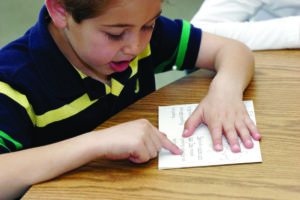Selecting and implementing the right ELA curriculum can lead to transformational change in student literacy. What selection and implementation processes will set you up for success? Dana Cilono of Education for Change Public Schools and Lisa Shugart of KIPP Bay Area Public Schools share their expertise in our webinar “How to Select and Implement a New ELA Curriculum.”
As a preview to this webinar, Lisa Shugart discusses KIPP Bay Area Public Schools’ selection criteria for ELA curricula and keys to successful implementation across multiple elementary sites.

School Profile
KIPP Bay Area Public Schools is a consortium of 15 charter elementary, middle, and high schools serving over 6,000 students in multiple cities throughout Northern California. The schools operate in educationally underserved communities.
Challenge
KIPP school staff needed a more comprehensive English Language Arts curriculum and more effective use of shared and close reading in their lessons. The teachers wanted a comprehensive curriculum—one that did not require supplemental materials for vocabulary, grammar, and handwriting—in order to result in stronger outcomes.
Implementation
Following an extensive search for a curriculum that met a long list of criteria (including leveled texts, cultural relevance, equity, shared reading, read-alouds, assessment tools, process-based writing, integrated phonics, and an emphasis on independent reading) KIPP selected Collaborative Literacy. They planned to use it for the first year of a newly founded elementary school, but leaders and teachers from the other schools became interested in the curriculum, and so it was implemented in all their Bay Area schools starting 2018–2019.
“Teachers immediately found that they liked Collaborative Literacy, and appreciated how the alignment supported them and kept them from having to do extra work,” said Shugart.
Results
Because this is the first year of implementation, KIPP does not yet have year-over-year data to demonstrate the differences or results of Collaborative Literacy in their classrooms. However, in the first six months of implementation, teachers have had a strong positive reaction to the curriculum. Reported strengths in the classroom include “a lot more excitement about books,” and that the curriculum “created and fostered a culture of respect and compassion, allowing students to take other points of view, listen and respond thoughtfully.”
Here’s what KIPP Bay Area Public Schools teachers said about Collaborative Literacy in their classrooms:
- “Text selections and integration of the curriculum led to students making far more text-to-text connections. My students have a good amount of background knowledge with the texts, which has made it easy for them to make their text-to-self and text-to-text connections,” said Maggie Brown, first-grade teacher.
- “The vocabulary portion of Collaborative Literacy has produced a new level of excitement in my class about learning new words. I’m filled with joy when my students share that they have found a vocabulary word in an independent reading book. Their faces light up, and learning new words is so fun for them,” said Sawyer Hulbert, second-grade teacher.
- “Students are excited about the turn-and-talks and think-pair-share work due to the amazing texts and related questions,” said Ms. Cowan, first-grade teacher.
- “I notice kids are implementing SEL in all parts of their day, and really listening to their peers,” said Victoria Sarantapoulos, KIPP kindergarten teacher.
